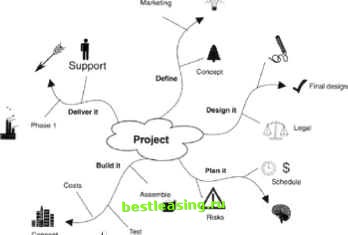

 |
 |

|
Промышленный лизинг
Методички
this drive to produce more documents can actually slow a company down. However, this needs to be better addressed by CMM. Many companies simply do not have the commitment, time, and resources to graduate beyond Level 1 or 2 on the CMM scale. So they stay there. The downside is that these companies eventually lose business, because nobody wants to hire a company who is rated as ad-hoc Level 1 on the CMM scale. There are even fewer companies identified at Levels 4 or 5. However, at these levels, you will undoubtedly find that more reviews, inspections, and meetings take place just to satisfy the CMM auditing and certification requirements. In conclusion, assessing your project management in your company and thereby gauging yourself against others requires that you apply some form of metrics to your projects. CMM/ CMMI techniques are a way to do this, showing you know how your project management measures up to the rest of the industry. Its a clear way to determine if youre doing what you say you can do. Using the Mind-Mapping Concept The one effective way to lay out the envisaged framework of a project methodology is to illustrate or mind map it on paper first, thereby addressing all areas of the organization. Figure 2.4 shows a typical mind-map framework. You can easily start developing a framework in this manner. Look at the way we mentally organize our thoughts as this is very relevant to thinking about methodologies. If you cannot map out a process, it is futile. However, the human brain is so sophisticated that the mind-mapping method guides the methodology development process. Your brain initially encounters biochemical or electromagnetic resistance along its pathway, where thoughts are reduced. Its like trying to clear a path through a forest. The first time is a struggle, as you have to fight your way through the undergrowth. The second time you travel that way, it is easier because of the clearing you made on the first pass. Frequent repetitive events make it easier for you. Likewise, creating mind maps and documenting them in creative graphical formats assist the human brain in receiving, holding, analyzing output, and control. What happens in your brain when you want to design a project methodology? The answer is both simple and amazingly complex. Every thought or bit of information entering the brain experiences and memory (template, code, word) can be represented as a central sphere that radiates tens, hundreds, thousands, millions of hooks which represent associations that in turn have their own links and connections. The number of associations you have can be thought of as your memory or database. As you read these words, you can be assured that in your brain is an analytical super computer that is far superior to many of the worlds most advanced computers. The mind-mapping technique offers us the following approach: It has a central theme. It has branches of themes, which radiate from this central core. These branches contain keywords and are connected. This together creates a picture of the solution or idea you need.  Figure 2.4: Mind-mapping methodology. A mind-mapping method can be extended easily to designing or conceptualizing any project methodology in existence in a graphical manner. From this, anything is possible. 1 2 3 4 5 6 7 8 9 10 11 12 13 14 15 16 17 18 19 [ 20 ] 21 22 23 24 25 26 27 28 29 30 31 32 33 34 35 36 37 38 39 40 41 42 43 44 45 46 47 48 49 50 51 52 53 54 55 56 57 58 59 60 61 62 63 64 65 66 67 68 69 70 71 72 73 74 75 76 77 78 79 80 81 82 83 84 85 86 87 88 89 90 91 92 93 94 95 96 97 98 99 100 101 |